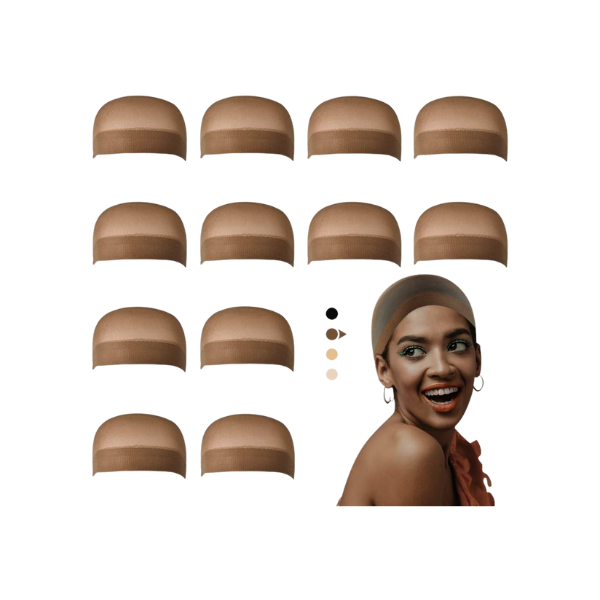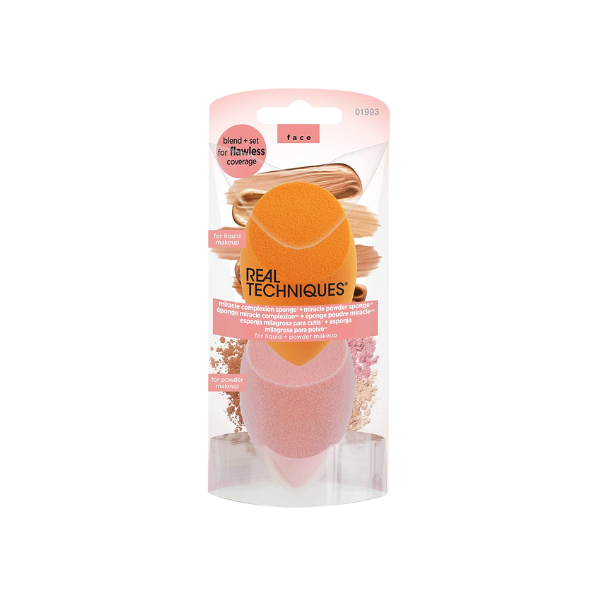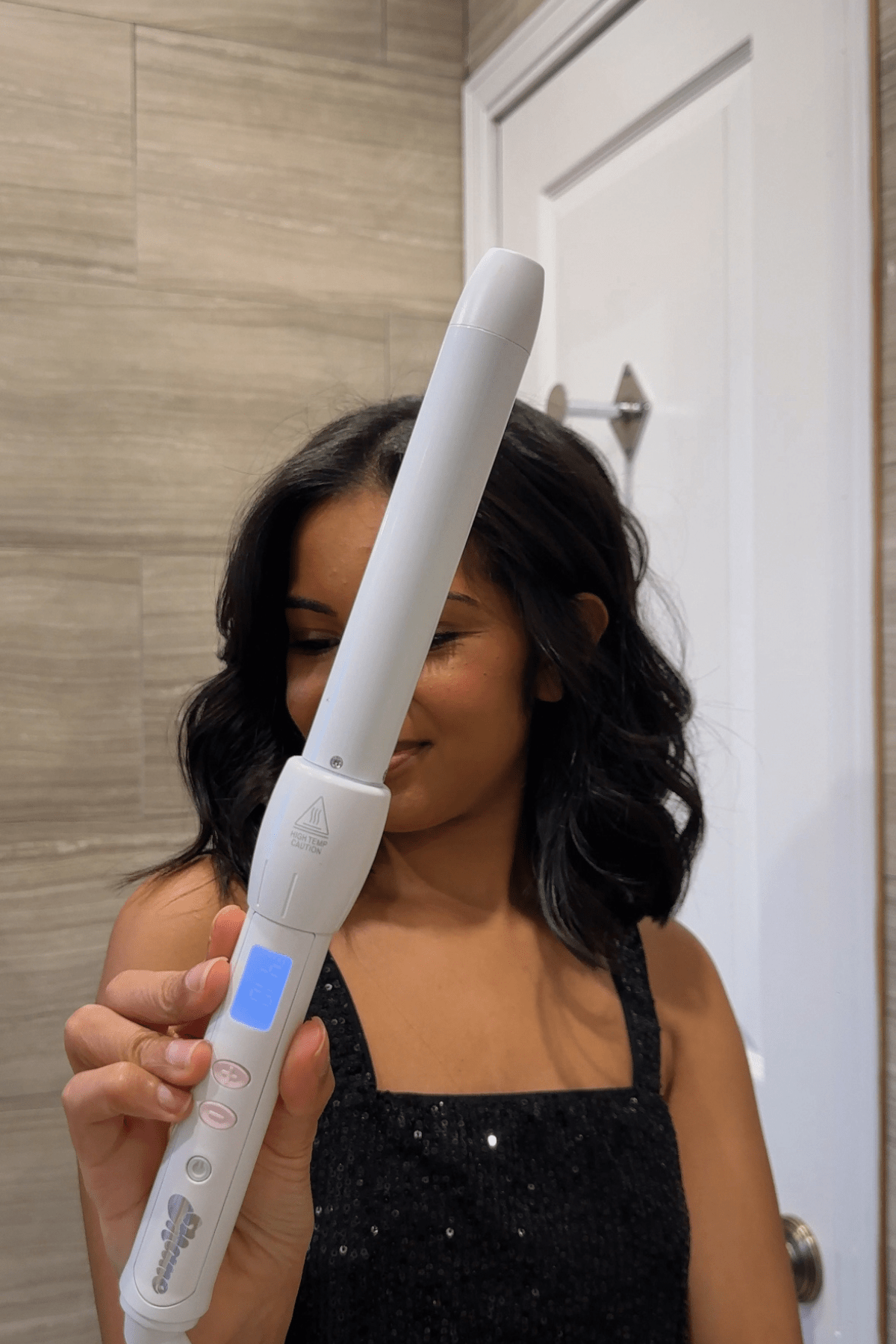The Ultimate Guide To Wigs (Including Wigs For Thin Hair)
This post may contain affiliate links, which means I'll receive a commission if you purchase through the link at no extra cost to you. Please read the full disclosure here.
If you’re investing in a wig due to hair loss, or simply want to change your hair texture, hair color, or hair length, there are many options on the market for you to try. Hair loss or thinning hair is a common reason why many turn to wigs, but the reasons behind it may vary from individual to individual.
This guide to wigs will cover everything you need to know when choosing your next wig. You will learn everything from what might be the reason why your hair is thinning to what wigs are on the market for not only fine thin hair but for all other hair types.
Why Wigs?
Some individuals wear wigs because they want to give their hair a break from dyes, chemicals, and tight styles that can cause damage to follicles. The fashion, entertainment, and beauty industries use wigs regularly, with some iconic figures like Cardi B, Lady Gaga, Gwen Stefani, Nicki Minaj, and more sporting them almost daily. Using wigs is the best way for these famous icons to keep the integrity of their hair intact.
Potential Causes of Hair Loss:
Abnormal hair loss is called alopecia, with common types including alopecia areata, and postpartum alopecia. Androgenic alopecia is hair loss that is “characterized by the miniaturization of terminal hair that is converted into vellus hair. It is usually the result of genetics, age, or hormonal changes that cause terminal hair to miniaturize.” (Milady Standard Cosmetology 235). It can begin at different points in one's life, with some experiencing it in their youth and others developing it as they grow older.
Alopecia areata is an autoimmune disorder that occurs when one’s immune system attacks the hair follicles, causing hair loss. Alopecia areata affects millions of people worldwide.
Postpartum alopecia is temporary hair loss that occurs after pregnancy in women, beginning in small amounts during pregnancy and suddenly increasing to excessive shedding. (Milady Standard Cosmetology 235).
Other reasons for hair loss or hair thinning can include stress levels, diet, sleep intake and so much more.
Does Density Matter With Wigs?
When choosing a wig, you may wonder what density refers to or why hair density even matters when it comes to picking out a wig.
Wig density: is a percentage of individual strands of hair that indicates how much hair is actually on your wig, but it has nothing to do with the texture. It will appear fuller if the density percentage is higher; it will appear that you have fine hair or thinner hair if the density percentage is lower.
When selecting a wig, it is important to consider how thick you would like the hair to avoid it looking too large for your head. The standard density for wigs is 150%, but it can go up to 200% or more. 150% density is ideal for individuals who want a wig that will mimic a full head of hair that isn’t too thick.
How do I choose a wig for my hair?
The second thing to consider when choosing a wig for yourself is what type of hair you want your wig to be made out of. Many wigs are distinguishable through the material, with synthetic hair and human hair wigs being at the top. Synthetic wigs are made with plastic, man-made fibres that mimic the feeling of hair. Synthetic wigs are more affordable than human hair wigs due to this reason.
Synthetic wigs are a great option if you’re experimenting with the application, testing out new colors, or just looking for a cheaper alternative than a human hair wig. The most common issue that people run into with synthetic wigs is that they tangle easier, resulting in stiff or frizzy hair. It is possible to comb these tangles out, but it requires a lot of work and is not a foolproof way to combat this issue. Many suggest washing synthetic wigs in fabric softener to delay the tangling process.
Also, you can not use a flat iron or any other hot tool on synthetic hair. The heat will melt the hair. Overall, synthetic wigs may not be great for daily wear. However, the good news about synthetic wigs is that they are a great solution if you are looking for an affordable way to get into wigs.
How To Installation A Wig
Bald Cap Method vs. Glueless Installations
Application is one of the most important parts of installing a wig, but there are many ways one can go about it. The two most common wig installation methods are broken down in easy steps below. These two methods can be used on all hair types, including those who may be experiencing any type of hair loss.
The Bald Cap Method is one of the easiest ways and also trusted methods used when installing your wig.
Step 1: Use a wig cap that resembles the skin tone of the person wearing the wig.
Step 2: Simply braid your hair as flat as possible, slide a wig cap over your hair and ears, and cut a slit in the middle of your ear area so that it can poke through. Then, spray “Got2b Glued Blasting Freeze Hairspray” onto the wig cap and let it air dry, or use a blow dryer.
Step 3: Once the cap is stuck to your hairline, use a pair of scissors or an eyebrow razor to cut the excess lace off. If the wig cap doesn’t match your skin tone exactly, you can use a beauty blender and your shade in foundation to tap the product onto the cap.
Step 4: Then, slide on your wig to see where you would like it to rest on your head, take it off, and apply a thin layer of wig glue on the edge of the wig cap where you wish to stick the wig lace. When it's tacky, press the wig firmly down onto the glue and blow-dry.
Step 5: You can also tie a wig band around the lace to keep it in place while the glue dries. Once dry, you have the option to straighten, curl, or style your wig with baby hairs. If you’re stuck, there are lots of YouTube videos that will help walk you through your installation.
Click to shop all products mentioned above
Glueless installations are exactly what it suggests, a wig installation that foregoes glue and rests on your head with only the help of built-in combs. Glueless installations are perfect for quickly running errands, wearing a hat for the day, or even just saving time in the morning while getting ready.
Step 1: Simply put a wig cap on your natural hair and slide on your wig of choice. Headband wigs are the most discreet but natural glueless styles.
The Different Types of Wigs For All Hair Types, Including Thinning Hair
When I refer to closures, frontals, and full lace wigs, I’m referring to the part of the wig that mimics your scalp.
Lace Closure & Lace Frontals
A lace closure wig is usually 4x4 inches, meaning that that specific area of the wig is the area that you can part. Three-part closures provide you with three alternative ways to part your hair, whereas middle part closures only give you one. The free part, on the other hand, allows you to part your hair any way you like for a variety of styles. Because of its versatility, a free part closure hairpiece is preferred.
Lace closures are friendlier on your scalp and are typically low maintenance, with no need for glue or foundation to blend it as much as a full lace wig. This means that lace closures typically last longer, whereas, with a lace wig, you would have to be on a consistent washing cycle to stop product buildup in between installations. Still, lace closures are an excellent solution for beginners who want to test out wigs.
Lace frontals can be sewn into your hair or used with glue and hair extensions to achieve a fuller look. Typically lace frontals will extend from ear to ear, with extra lace that usually needs to be trimmed to suit your face shape. Lace frontals are extremely popular right now due to how natural they look once applied properly.
With frontals, you can achieve a variety of styles, including side parts, slick back ponytails, and more, while saving time that would be otherwise lost by applying a full lace wig. Lace frontals can accumulate buildup over a long period of time if you are not consistently washing and drying it, and that can alter the color of the scalp area, or leave you with glue residue. However, lace frontals are one of the most natural styles of wigs, especially ones with high-quality lace.
Headband wigs
Headband wigs are the best choice for novice wig users, as the need for parting is almost entirely eliminated. Headband wigs utilize a soft headband around the front area of the wig so that the individual can simply slide it onto their head without the need for glue or an otherwise complicated installation process. Headbands come in multiple patterns, shades, and designs, as well as multiple hair textures.
Full Lace Wigs
Many individuals choose full lace wigs because they have a full lace base that allows them to wear the wig in any manner they like. Compared to other wig bases, the lace makes the wig light on the head, whereas with closures or frontals you would feel the difference in the net base or combs while wearing it. Full lace wigs are by far the most natural-looking as long as the unit is applied correctly. Full lace wigs can be worn glueless (HD lace or transparent lace looks the most skin-like) or applied using the bald cap method. Because the lace usually covers the majority of the wig, the unit can be styled in an updo, a middle part, a side part, or whatever the individual prefers.



















Learn how to fix damaged hair fast at home using bond repair, deep masks, and oils. Pro tips from a hairstylist to rebuild strength and shine.